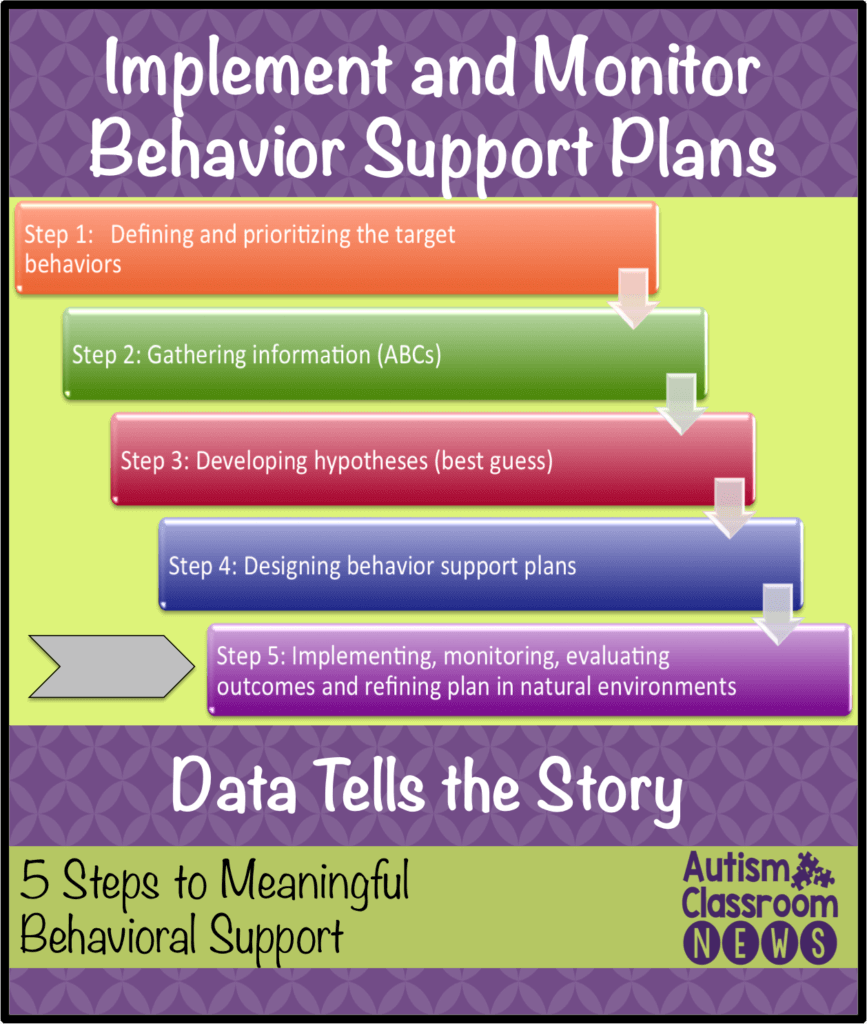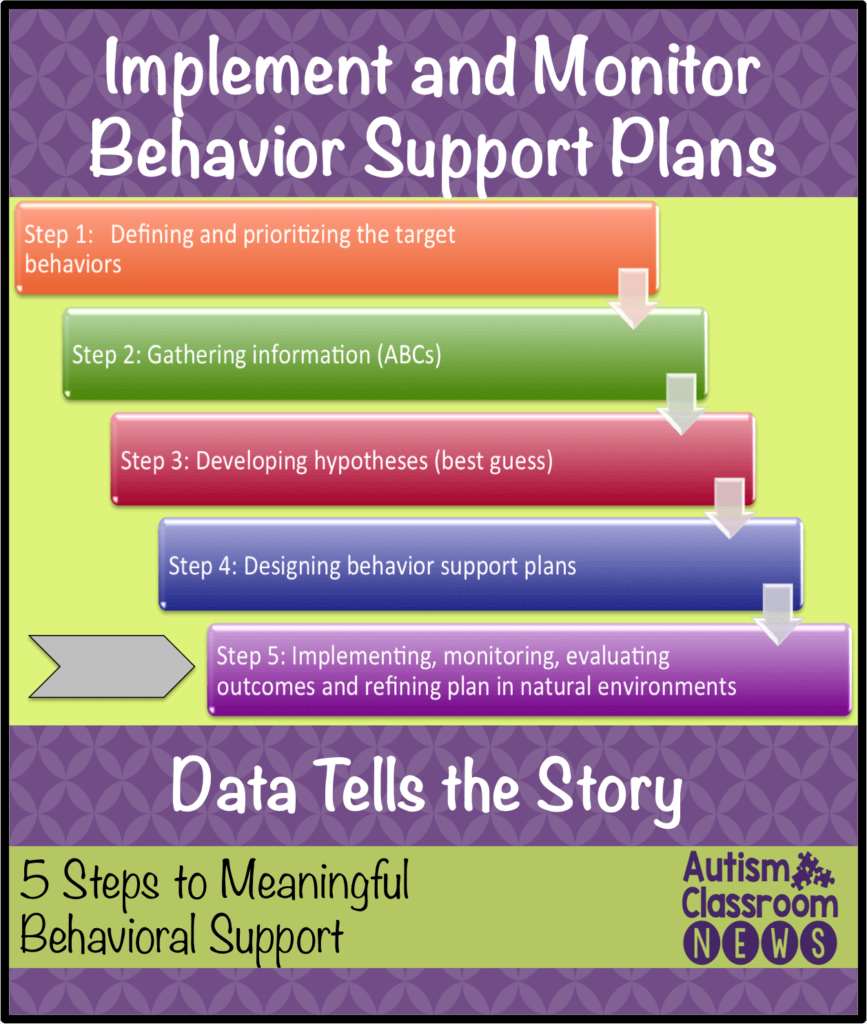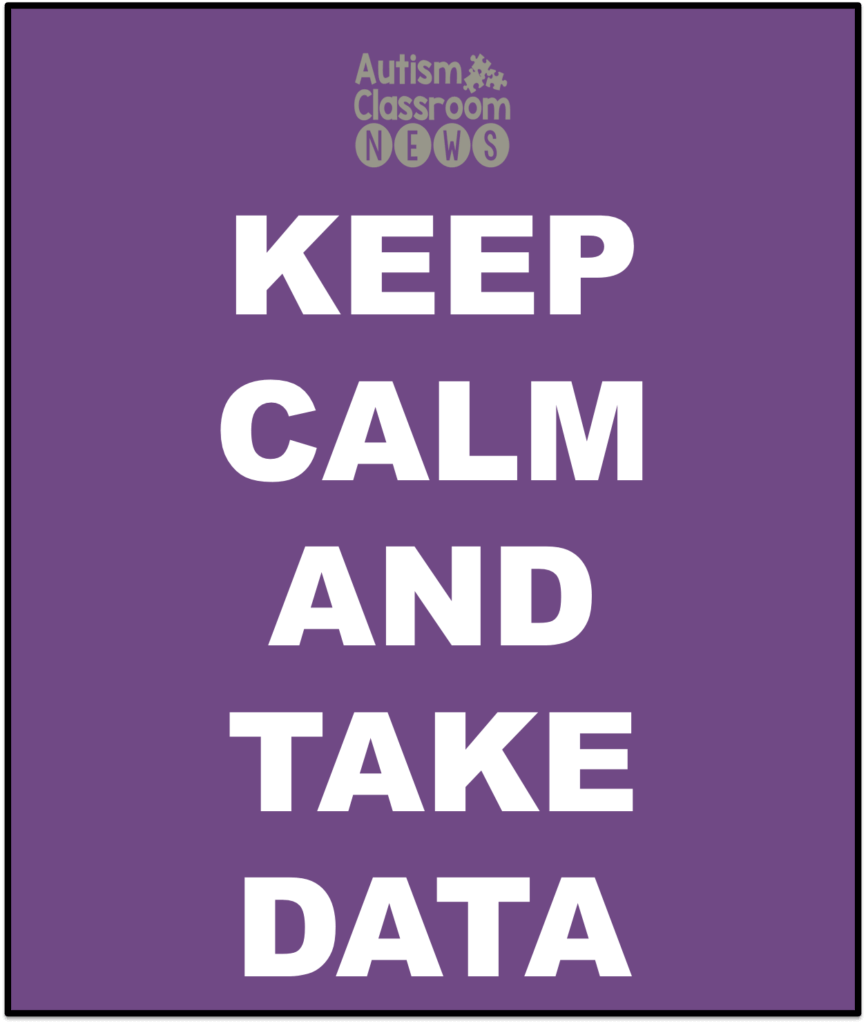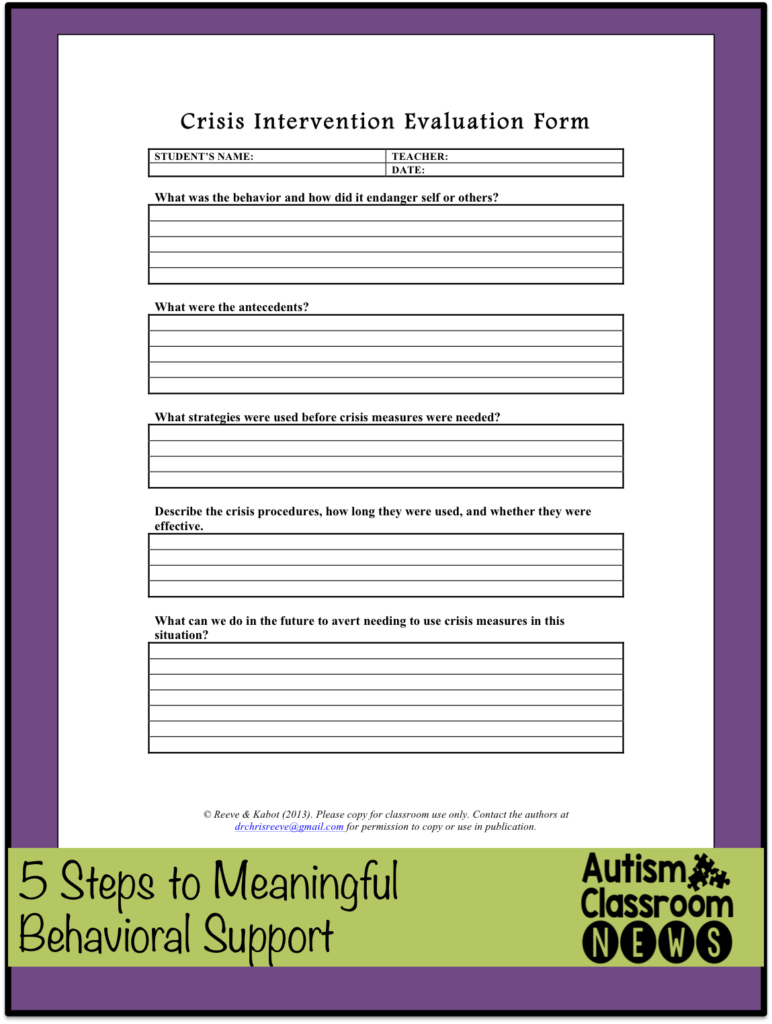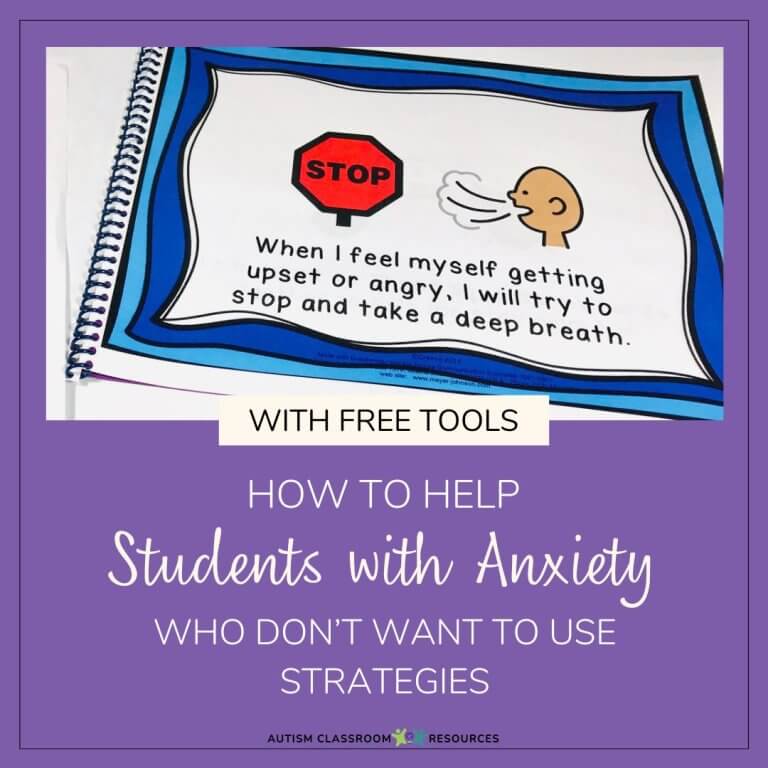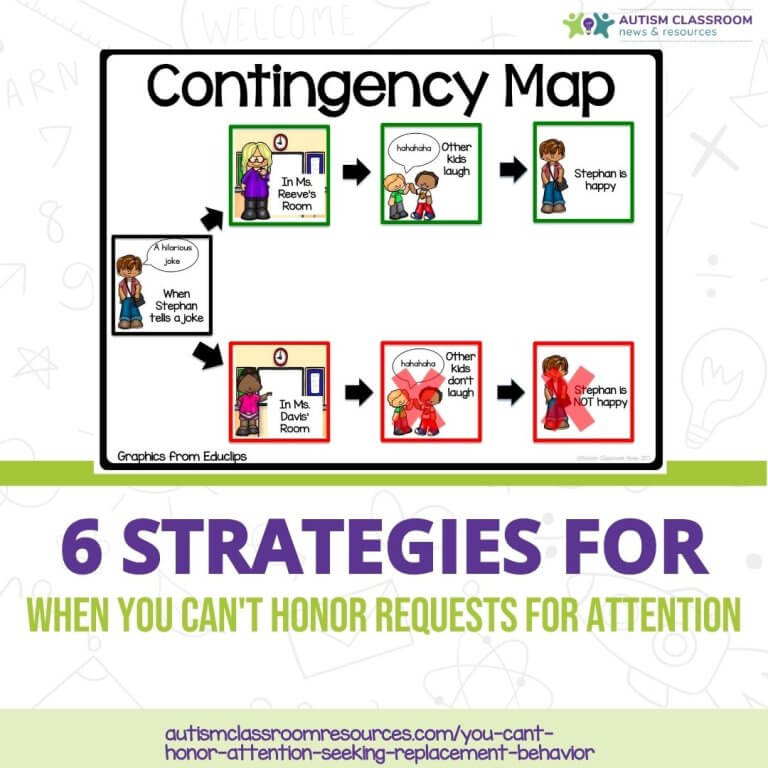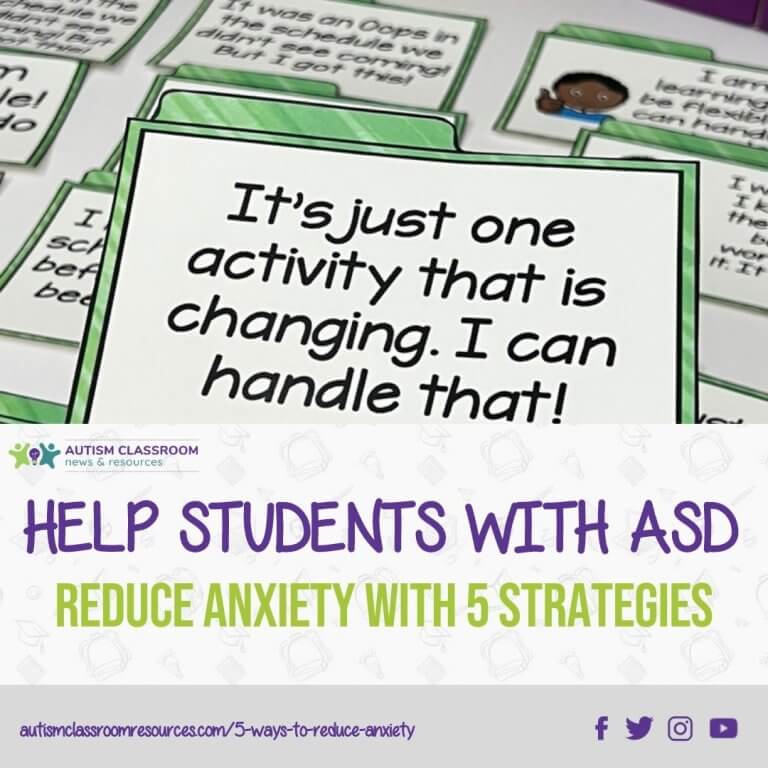Sharing is caring!
I think it is time to wrap up the 5 Steps to Meaningful Behavioral Support series by talking about the 5th step–implementing and monitoring the support plan. It’s really easy to feel like once you have put together your behavior support plan that you are done and can you relax (oh, and concentrate on one of the thousand things that need attention). Unfortunately, you don’t yet know if the plan you put together is actually going to work. So, let me share some tips and thoughts about what the next steps are for this phase of the cycle.
Essentially this is another 5-part process to implement the behavioral support plan that is written and make sure it’s working or problem-solve if it’s not.
1. Train the Staff
This is probably one of the most difficult but most important element in the process. It’s important that everyone who has contact with the student knows how to implement the plan. Also remember that everyone needs to implement the preventive and replacement processes of the plan, not just know how to respond when a challenging behavior occurs.
Hopefully most of those working with the student were involved in the development of the behavioral support plan. This will help them to understand it. Anyone who was not part of the process of finalizing the plan will need you to review it with them. You may have to troubleshoot with them, if they are in a different environment–like Music or Recess, about how to modify parts of the plan that don’t fit with their setting. Also, remember that modeling and demonstrating is going to be more effective in helping others implement strategies than just telling them about them. For instance, SHOW them how to accompany verbal directions with visuals or use visuals to redirect the student so they can see how it works.
Then, depending on your situation, you may also want to use the behavior plan as a checklist to check-in periodically to make sure that all the steps are being implemented. Behavior analysts often use this system by creating competency checklists for the individual strategies that we can use to assess the staff or caregiver’s implementation of the strategies within the plan. In a classroom this might be less formal, but regular assessment of whether everyone is implementing correctly is important.
2. Implement the Plan
Pretty straightforward, but you won’t really know how effective your plan is for the student or the context until you start using it. You may have piloted some of the issues in your assessment procedures. Unless something is terribly wrong with it, I generally recommend implementing the plan for a couple of weeks to see if it is being effective. Some strategies are going to create increases in the behavior before they decrease. Replacement strategies are usually something that you are teaching and it takes time for them to be used effectively. If you try something for a day and then throw it out, you may have missed a useful tool that would have been effective in the long term. Behavior support is not an overnight fix–it takes time and dedication but can have long-term positive effects.
3. Take Data and Review Regularly
I know, it’s that dreaded 4-letter word again: DATA! The good news about this phase is that the data collection gets a lot easier than in the assessment. Now that you have your plan in place, your data just needs to reflect whether the behavior is increasing, staying the same, or decreasing. Consequently you typically don’t need more extensive assessment like ABC data and instead just need to track frequency, duration or intensity. Things like counters, post-it notes, and tally marks can be used to track the data. I talked about some of these strategies HERE and HERE.
In addition to taking the data regularly, you need to review it and see what is happening. Self-graphing forms and forms that the data can show a pattern are really useful. There are some great examples on Dr. Laura Riffel’s website under Data Collection and Forms and Tools. Look for the minute-by-minute form that are great for duration.
I will talk more about data in the future when our new book comes out this summer.
4. Problem-Solve
As you review your data and proceed with implementation, you will need to problem solve issues that arise with either implementation or behavior that isn’t changing the way you expected. There a couple of ongoing ways that you can do this. If you have a behavior that results in some type of crisis intervention (and even if you just have behavior that happens in episodes), you can use the crisis evaluation plan to help the team problem-solve why the episode occurred and what you are going to do next time to prevent the problem from reoccurring.
click here for a pdf copy of the form
In addition, if you are working with a student who is able to participate in the problem-solving process, the Social Autopsy that I’ve talked about in THIS POST and there is a freebie there as well. Essentially it walks the student through the process of thinking about what happened, how it could have been handled differently, and what he/she can do next time.
And the added benefit of this additional paperwork is if the student has behaviors that are episodic (e.g., has a meltdown that lasts 20 minutes but only has one a week), these types of forms can also serve as data collection if you complete them for each situation.
5. Change the Plan as Needed
Finally, when you find that something is not working, CHANGE IT. I know that sounds pretty obvious, but so many times we write the plan and then forget to check-in with it. As a team, use the problem-solving process to figure out what needs to be changed. Review the plan regularly with the staff to find out what is working for them and what isn’t, and make changes accordingly.
And if all else fails and your plan is not decreasing the challenging behaviors, you will need to go back to the FBA process and re-evaluate whether you are addressing the correct functions. In general this is also a time when I suggest that you may need someone from outside the team to help figure it out. This could be a school psychologist, a behavior specialist from the school (if not already involved) or it could be an outside consultant or BCBA. Sometimes it is helpful to have someone outside the situation who may see things you can’t. In addition, BCBAs and psychologists have training in behavioral support and can do a more sophisticated assessment when it is difficult to determine the function of the behavior. I often work with school districts to address this type of issue and sometimes just having a pair of fresh eyes with the ABA background helps to clarify the problem and develop solutions.
So, I hope that this series has been helpful for everyone. In my next post, I will wrap it up with links to the different steps and the posts that correspond to it so it will be easy to find them, as well as the resources I’ve shared along the way. Then, I am going to start a series (I think) on the most effective ways to teach vocabulary and instructional strategies.

